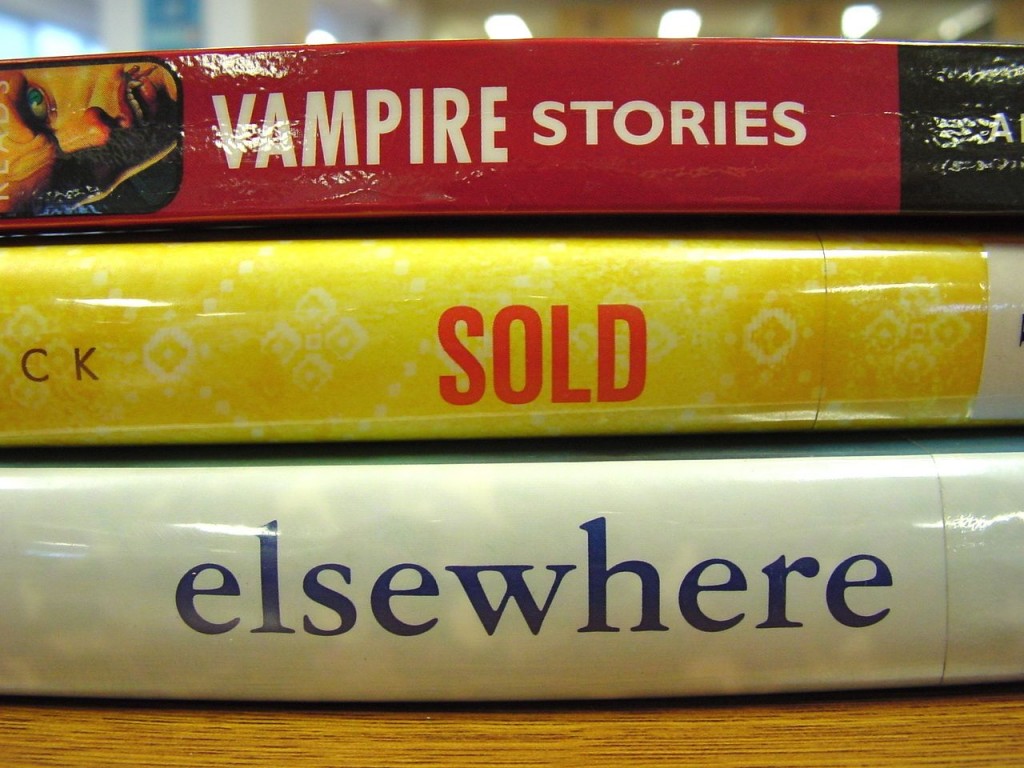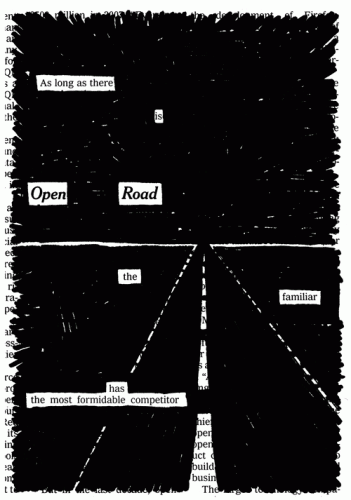*yawn* Poetry. Am I right? If it’s not your thing it’s not your thing and no amount of jibber jabbing is going to change that. So thought this librarian for a number of years (and my own mother’s a published poet, so you know it’s not due to lack of exposure). Seems my old attitude is shared by just too many people out there too. Mention that April is Poetry Month and their eyes take on a distinctly glazed appearance.
So what’s the solution? Two words: Weirdo Poetry. Today, ladies and germs, I intend to show you poetry that will not move your soul to gladness nor speak to a secret spot inside yourself that you never thought anyone else would know. Nope. Today it’s all about the goofy poetry. The brain teasing poetry. The poetry that makes you sit up and say, “Whaaaa?” In short, poetry for people who don’t much care for the stuff.
Weirdo Poetry Example 1: Spine poetry
Pretty self-explanatory. Basically, you create poetry out of the spines of books. Here are a couple prime examples:



This doesn’t have to be limited to poetry, of course. In a rather fascinating case, the Kansas City Public Library and the Toronto Public Library got into an all time spine poetry slapdown Twitter feud . . . in a nice way. You see, apparently The Kansas City Royals were playing The Toronto Blue Jays in the American League Championship Series and the libraries started tweeting spine poetry at one another. You can read two different articles (and see a LOT of smack downs via spines) here and here.
Weirdo Poetry Example 2: Fibonacci Poems
Good old Fibonacci poetry. In late 2013 children’s literary blogger Greg Pincus published a middle grade work of fiction. The 14 Fibs of Gregory K dared to combine the uncombine-able (not a word, I know): math and poetry. Mr. Pincus, you see, is the creator behind this particular form. Back in 2006, Motoko Rich wrote the New York Times article Fibonacci Poems Multiply on the Web After Blog’s Invitation. As Greg explained on his blog GottaBook: “I wanted something that required more precision. That led me to a six line, 20 syllable poem with a syllable count by line of 1/1/2/3/5/8 – the classic Fibonacci sequence. In short, start with 0 and 1, add them together to get your next number, then keep adding the last two numbers together for your next one.” Here’s an example:

Weirdo Poetry Example 3: Blackout Poetry
I’ve enjoyed this form for years, but it wasn’t until I tried it out on a couple different groups of kids that I saw how effective and interesting it can be. Consider it a forced found poem. The poet’s job is to find a newspaper article or horoscope and to blackout everything except the words for their poem. Intrigued? Read a whole swath of them here. Kids, as it turns out, are preternaturally gifted in this area. Some glom onto the form instantly. Others need some help. Whatever the case, just be sure you have enough black markers on hand if you try this. Here’s an example:

Weirdo Poetry Example 4: Reverso Poetry
Best illustrated by children’s book poet Marilyn Singer. She perfected the form in books like Mirror Mirror and Follow Follow (though I harbor a very great love for her Nixon reverso in Rutherford B.: Who Was He?). The poet writes broken lines down and then uses the same lines but reverses them to tell the other side of the story. Here’s an example:

Weirdo Poetry Example 5: Single Word Poetry
I call it this because insofar as I can tell Bob Raczka made up this kind of poetry and I can’t find it in existence anywhere but his book Lemonade: And Other Poems Squeezed From a Single Word. Basically you take a word and then turn the letters in that word into a poem. To read it, your eye has to follow the letters down the page in a very specific order or the poem won’t make any sense. An example:

Can you see it saying “A silent lion tells an ancient tale”? Because that’s the poem and it’s a darn clever one too. Try this with your kids if you want to, y’know, watch their heads explode or something. It’s poetry as codebreaking as far as I can tell.
Weirdo Poetry Example 6: Snowball Poetry
According to BoingBoing, “A ‘Snowball’ is a poem ‘in which each line is a single word, and each successive word is one letter longer’.” In other words, not too different from a Fibonacci poem in that math is involved in some way.

And that’s all she wrote!
Want to know what the best poetry of Spring 2016 is at the moment? Check out this list from Publishers Weekly and then order some copies from the library today!
